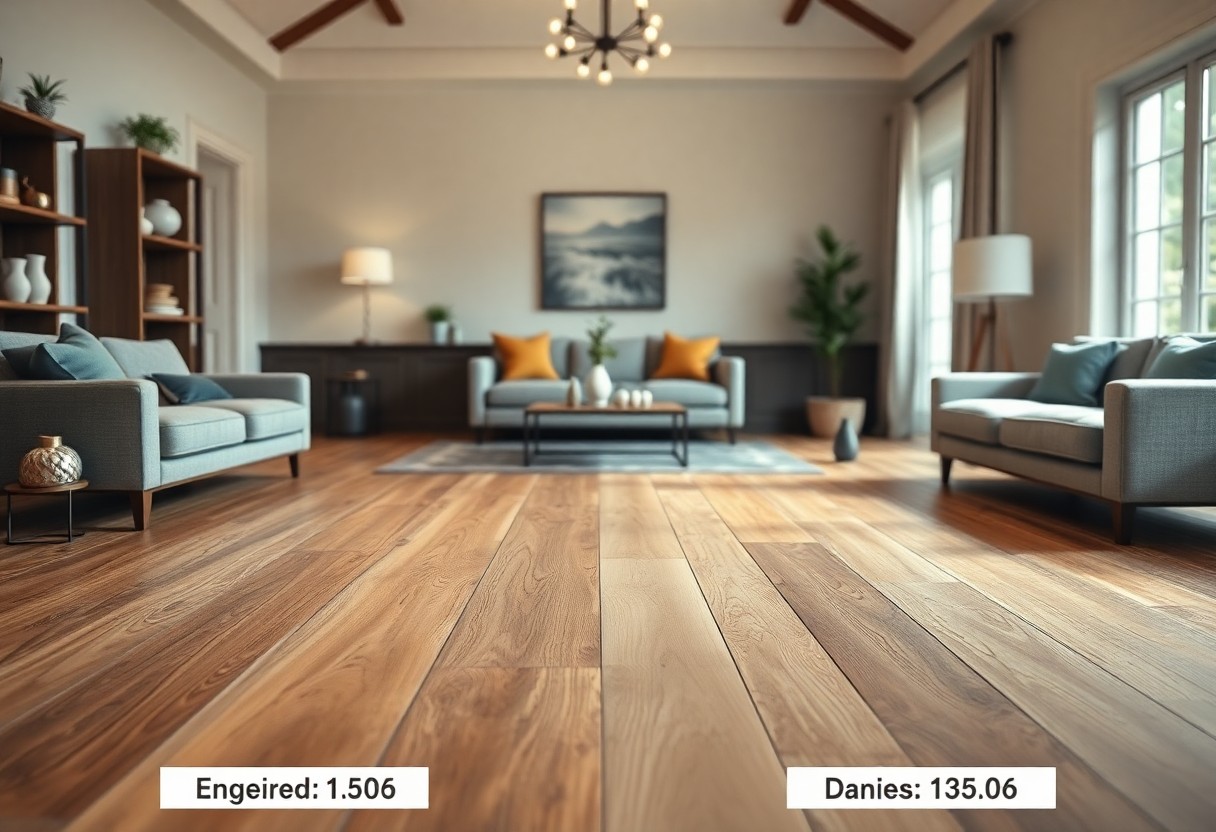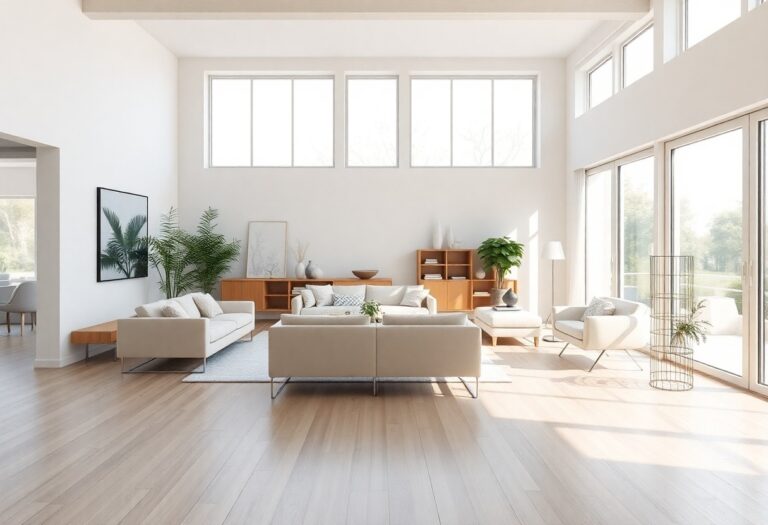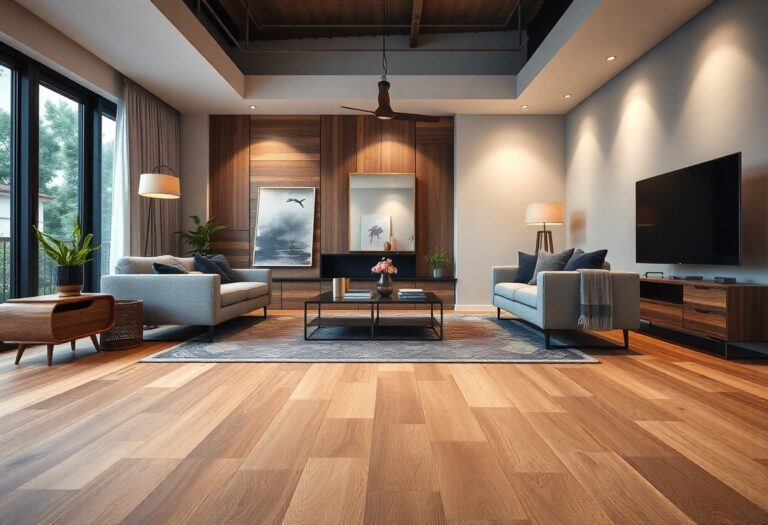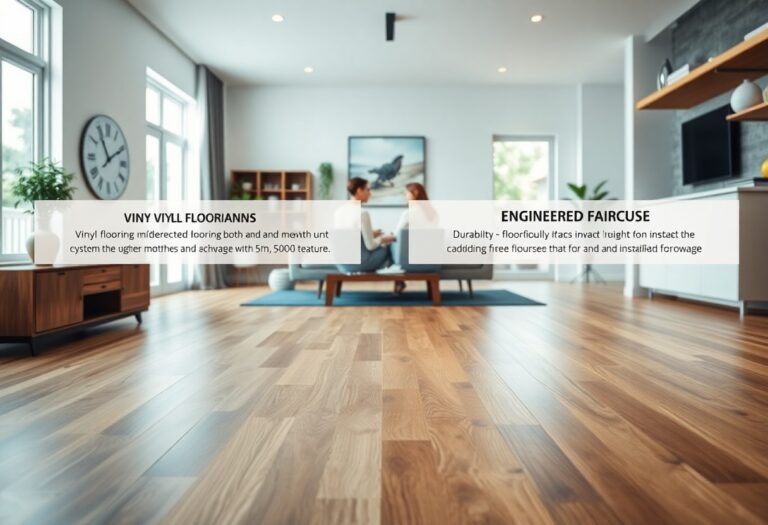You may be considering engineered timber flooring for your home, but navigating the price differences between budget-friendly and premium options can be overwhelming. This article breaks down the costs associated with each choice, helping you make an informed decision that suits your financial priorities without compromising on quality. Whether you’re looking to enhance the aesthetic appeal of your space or seeking durability, understanding these price ranges will empower you to select the perfect flooring solution that fits your lifestyle and budget.
The Cost Spectrum of Engineered Timber Flooring
Engineered timber flooring comes with a diverse range of prices, catering to different budgets and preferences. Typically, budget-friendly options can start around $30 per square meter, while premium choices can exceed $100 per square meter. Your selection often hinges on factors such as thickness, wood veneer quality, and brand reputation, influencing overall value and longevity.
Breaking Down Budget-Friendly Options
Budget-friendly engineered timber flooring often features thinner top layers and simpler finishes, starting at approximately $30 to $50 per square meter. These options typically include a variety of wood species and designs, providing decent aesthetics and performance for homeowners seeking a cost-effective solution. While quality may vary, many budget products still offer solid durability for smaller areas or low-traffic zones.
Unpacking Premium Choices and Their Value
Premium engineered timber flooring can range from $70 to over $100 per square meter, but offers remarkable benefits that justify the investment. These options usually feature thicker veneers made from high-quality hardwoods, resulting in improved resistance to wear and tear. Additionally, you gain access to advanced finishes and treatments that enhance appearance and prolong the flooring’s lifespan, making them worthwhile for high-traffic areas or long-term home value.
Investing in premium engineered timber flooring not only elevates your space aesthetically but also ensures durability and ease of maintenance. With manufacturers often providing extensive warranties, you can trust that your choice will withstand daily use and retain its beauty over time. Premium options typically boast advanced moisture resistance and stability, ideal for varying climates. These attributes allow you to enjoy both functionality and style, potentially increasing your property value in the long run.
Quality vs. Price: What You Really Get
Choosing engineered timber flooring involves weighing the balance between quality and price. Budget options might initially attract you with lower costs, but they often compromise on durability and aesthetics. Premium models, while costly, typically offer superior materials, better craftsmanship, and longer-lasting finishes, providing long-term value despite the higher upfront investment.
Understanding Construction and Longevity
The construction of engineered timber flooring significantly impacts its longevity. High-quality options often feature thicker wear layers and more robust core boards, contributing to greater resistance against dents, scratches, and moisture. While budget choices may use thinner layers and lower-grade materials, leading to a reduced lifespan, investing in premium options can yield decades of performance if properly maintained.
Examining Aesthetic Versus Functional Qualities
Aesthetic appeal and functional qualities often dictate your choice of engineered timber flooring. Premium options frequently showcase rich wood grains and finishes that enhance the visual impact of your space, while also providing superior scratch and moisture resistance. In contrast, budget-friendly varieties may lack the same visual depth, potentially affecting your home’s overall aesthetic and long-term performance.
When you assess aesthetic versus functional qualities, consider how each flooring option contributes to your living environment. Premium engineered timber can elevate your home’s ambiance with an authentic wood appearance that impresses guests, while simultaneously delivering durability that withstands everyday wear. Conversely, budget options might serve a functional purpose but could lead to compromises in design and resilience, diminishing both aesthetics and long-term satisfaction in your investment. Evaluating how each choice aligns with your lifestyle and long-term goals is key to making the right purchase decision.
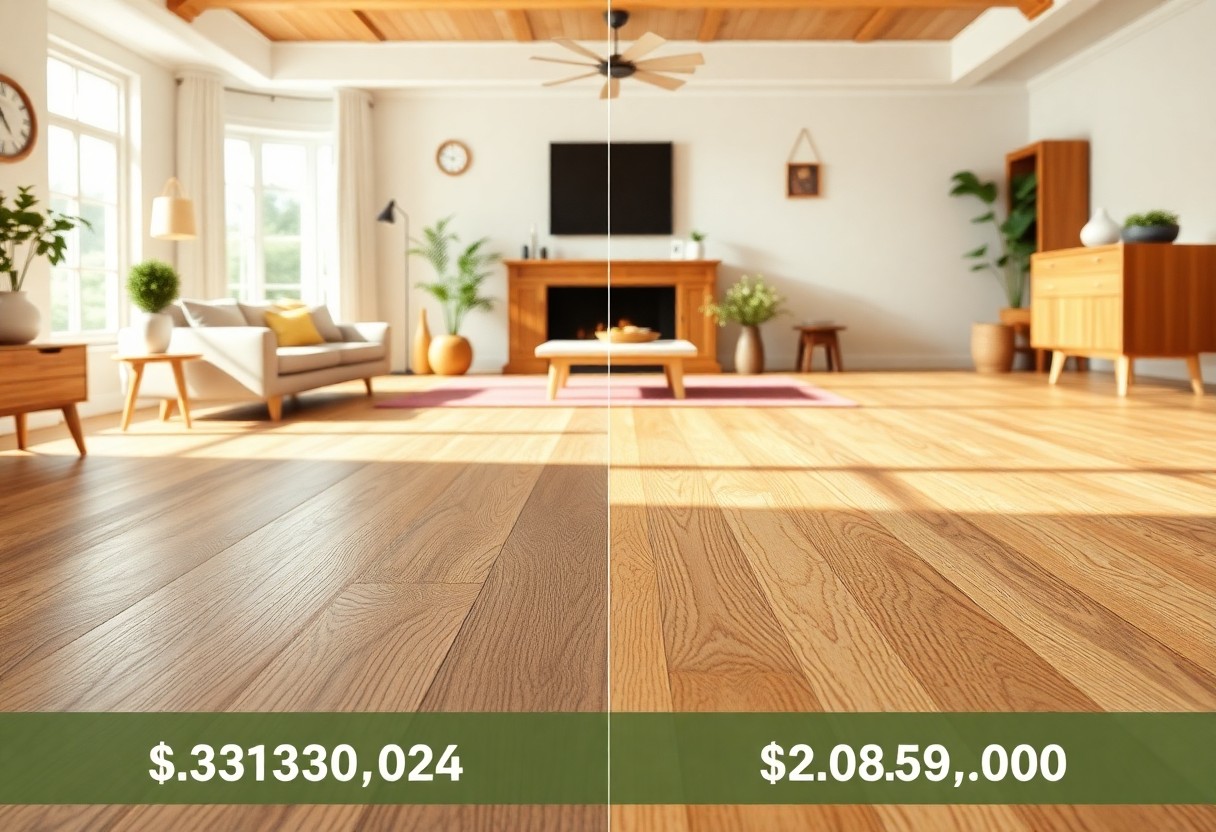
The Long-Term Financial Implications
Choosing engineered timber flooring involves assessing long-term financial impacts beyond initial purchase costs. Premium options may demand higher upfront investment, yet they often offer enhanced durability and longevity. Conversely, budget-friendly choices might lower your immediate expenses but could require more frequent replacements or repairs, ultimately influencing your overall budget. Understanding the lifecycle costs helps you make an informed decision that balances your current budget with future expenses.
Evaluating Installation and Maintenance Costs
Installation costs can vary significantly depending on the product quality and the complexity of the setup. Premium engineered timber often comes with specialized installation requirements, which can inflate labor expenses. Budget options tend to be easier and quicker to install, saving you money on installation costs. Additionally, maintenance and cleaning needs differ; high-quality finishes may require less frequent upkeep than more economical alternatives, leading to savings over time.
Assessing Resale Value and Investment Returns
The type of flooring you choose can significantly influence your home’s resale value. High-quality engineered timber may enhance your property’s appeal, commanding higher offers from potential buyers. Conversely, budget options might not offer the same perceived value, potentially leading to lower resale prices. When considering investment returns, it’s beneficial to view engineered timber flooring as a long-term asset; a well-chosen premium option can pay off when you sell, recouping a portion of your initial investment while also attracting buyers drawn to quality materials.
Research shows that homes with premium flooring features can sell for approximately 5% to 15% more than comparable homes with basic finishes. For example, a study in housing markets across urban areas revealed that properties boasting high-end finishes, including quality engineered timber, increased buyer interest significantly. Investing in flooring that combines aesthetic appeal and durability not only elevates your living space but also enhances marketability during resale, helping you achieve maximized returns on your home investment.
Expert Opinions: Insights from Industry Professionals
Industry professionals consistently emphasize the balance between budget and quality when selecting engineered timber flooring. Interior designers recommend investing in reputable brands that offer warranties and certifications, ensuring durability and performance. While cheaper options may save initially, the long-term costs associated with maintenance and replacement can outweigh savings. Your choice should reflect both your aesthetic goals and lifestyle needs for optimal results.
Consensus on Value for Money
Experts agree that mid-range engineered timber flooring often provides the best value for money. Options in this category typically blend durability with aesthetics, avoiding the pitfalls of both cheaper and excessively pricey varieties. Investing in this range offers a substantial return through longevity and visual appeal, aligning closely with your budget without compromising on quality.
Predictions for Market Trends
The engineered timber flooring market is poised for growth, with trends shifting towards eco-friendly materials and customizable options. As consumer awareness about sustainability increases, brands are likely to innovate, offering products made from reclaimed wood or sustainable forests at competitive prices. This shift not only appeals to environmentally conscious buyers but also enhances the market’s overall quality and diversity.
With a rising emphasis on sustainability, many manufacturers will adopt greener practices in sourcing and producing engineered timber flooring. Expect to see a surge in products featuring low-VOC finishes and sustainable adhesives. Moreover, the trend of personalization is gaining traction, where you’ll find more customizable options that allow for unique designs synced with your home aesthetics. Keeping an eye on these developments can influence your purchasing decision, as they’ll likely redefine value and quality standards in the market.
Navigating Choices: A Practical Guide for Consumers
Considering the variety of options in engineered timber flooring, understanding the landscape of choices will help you make informed decisions that suit your needs and budget. Evaluate your priorities, whether they be aesthetics, durability, maintenance, or environmental impact. Each choice you make can significantly affect your space and wallet.
Key Factors to Consider When Choosing
Several factors can guide your decision-making process when selecting engineered timber flooring:
- Wood species and finish
- Thickness and warranty
- Installation method (glue-down, floating, nail-down)
- Environmental certifications
Perceiving these elements will empower you to pick a flooring option that aligns with your lifestyle and preferences.
Tips for Finding Deals Without Compromising Quality
Finding budget-friendly options while ensuring quality is achievable with a strategic approach:
- Compare prices across multiple retailers
- Look for seasonal sales or clearance events
- Utilize online coupon platforms
- Consider purchasing directly from manufacturers
This can lead to significant savings without sacrificing the desired finish and durability.
To enhance your chances of scoring great deals, leverage connections within the construction and design community. Engage with local contractors who may receive discounts due to bulk purchases. Additionally, exploring online platforms such as marketplace websites can yield unique finds that aren’t available in brick-and-mortar stores.
- Stay informed about industry trends and manufacturer promotions
- Join forums to exchange tips and resources with other consumers
- Network with interior designers who might share insights on lesser-known discounts
This can often lead you to high-quality choices at an optimal price.
To wrap up
So, when comparing engineered timber flooring prices, you can find budget-friendly options that offer decent quality and aesthetic appeal, suitable for everyday living. However, if you prioritize durability and long-term investment, premium choices may provide greater resistance to wear and a more luxurious finish. Ultimately, the decision should align with your preferences and budget, ensuring your flooring meets both your aesthetic and practical needs.


